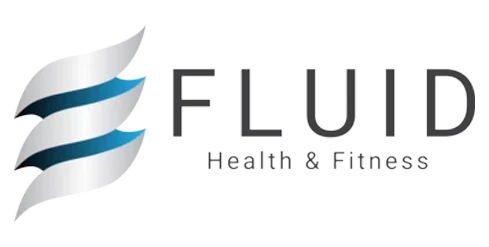
Breathing is more than a passive exchange of gases—it is a biomechanical foundation for posture, movement, and performance. At Fluid Health and Fitness, respiratory training is not treated as an isolated modality but as a central pillar of structural and metabolic integrity. In this blog, we explore the critical role of respiratory mechanics across five interrelated domains: ventilatory efficiency, postural control, intra-abdominal pressure, cardiometabolic health, and craniofacial stability.
From the diaphragm to the jaw, breathing impacts the entire kinetic chain. Understanding and optimizing this system can profoundly improve endurance, delay fatigue, and resolve chronic dysfunction.
Why It Matters
Breathing efficiency and respiratory muscle control directly influence:
| System Affected | Functional Outcome |
|---|---|
| Ventilatory System | Improved Ve/VO2 and Ve/VCO2 ratios, delayed fatigue |
| Musculoskeletal System | Enhanced intra-abdominal pressure and spinal stability |
| Craniofacial Alignment | Reduced TMJ dysfunction and jaw instability |
| Cardiometabolic Function | Decreased energy waste, improved endurance |
| Postural Control | Correction of forward head posture and compensation patterns |
Training your breath is not merely about capacity—it’s about precision, posture, and pressure.
Core Concepts
1. Diaphragm as a Postural Muscle
The diaphragm is a dual-function muscle responsible for respiration and core stabilization. Its descent during inhalation increases intra-abdominal pressure (IAP), a mechanism that braces the lumbar spine and engages the pelvic floor. Proper diaphragmatic activation creates a hydraulic stabilizing effect for movement.
2. Ventilatory Efficiency (Ve/VO2 and Ve/VCO2)
-
Ve/VO2 is the volume of air ventilated per unit of oxygen consumed.
-
Ve/VCO2 is the volume of air ventilated per unit of carbon dioxide produced.
High ventilatory efficiency means less breathing is required for the same metabolic output—critical in endurance and recovery.
3. Respiratory Muscle Training (RMT)
Training the diaphragm and intercostals through resistance-based devices like Airofit can:
-
Improve oxygen uptake (VO2)
-
Enhance carbon dioxide clearance (VCO2)
-
Reduce the oxygen cost of breathing during exertion
4. Intrathoracic Pressure and Postural Symmetry
Accessory breathing (clavicular, thoracic patterns) overuses muscles like the sternocleidomastoid (SCM) and scalenes, which destabilizes cranial and mandibular alignment. This can lead to forward head posture (FHP), TMJ dysfunction, and inefficient neuromuscular recruitment.
Step-by-Step Expectations: Training Breath as a System
Phase 1: Baseline Assessment
-
Measure inspiratory and expiratory strength using Airofit or spirometry.
-
Track heart rate, rate of perceived exertion (RPE), and respiratory rate during varied intensity sessions.
-
Perform postural assessment, focusing on cervical alignment, jaw position, and breathing patterns.
Phase 2: Foundational Breathing Retraining
-
Introduce low-resistance diaphragmatic breathing: 5–10 minutes pre/post session.
-
Apply drawing-in maneuvers to activate the transverse abdominis (TVA), engaging the “core cylinder” of the diaphragm, pelvic floor, and TVA.
-
Begin positional breathing drills (supine, seated, quadruped) with controlled tempo and visual feedback.
Phase 3: Load and Control Integration
-
Progressively increase resistance via Airofit over 4–6 weeks.
-
Introduce resisted breathing during low-to-moderate intensity exercise (e.g., cycling intervals).
-
Apply IAP-focused bracing techniques during strength training (e.g., squats, deadlifts) to stabilize the SI joint and lumbar spine.
Phase 4: Advanced Neuromuscular Control
-
Integrate PRI-informed asymmetry correction for clients showing lateralized patterns (e.g., RAIC dominance).
-
Combine breathing drills with cervical realignment techniques, mandibular mobilization, and orthotic interventions where necessary.
-
Use wearable metrics to monitor recovery time, breath rate, and performance output over time.
Preparation: What You Need to Begin
| Requirement | Description |
|---|---|
| Airofit or similar IMT device | To measure and progressively load the respiratory muscles. |
| Baseline VO2 and CO2 metrics (if available) | To monitor Ve/VO2 and Ve/VCO2 efficiency. |
| Therapist support or coaching | To guide cervical posture, jaw mechanics, and IAP generation. |
| Knowledge of compensatory patterns | Especially in clients with FHP, TMJ issues, or asymmetric loading patterns. |
Aftercare and Monitoring
1. Progress Tracking
-
Reassess inspiratory strength and lung volume every 4 weeks.
-
Monitor RPE and breath rate during progressively intense workouts.
-
Observe jaw stability, head posture, and tension levels in SCM/masseter.
2. Signs of Improvement
-
Lower heart rate at submaximal workloads.
-
Improved recovery time post-exertion.
-
Reduced TMJ clicking or jaw pain.
-
Enhanced neuromuscular control during bracing and dynamic movement.
3. Adjunct Strategies
-
Manual therapy for cervical spine, masseter, and temporalis.
-
Orthodontic or splinting interventions for occlusion correction.
-
PRI or DNS-based rehab protocols for hemispheric muscle balance.
Conclusion
Breathing is not a peripheral variable in performance or rehabilitation—it is central to both. At Fluid Health and Fitness, we treat the respiratory system as a biomechanical and metabolic regulator, integrated with core stability, craniofacial mechanics, and systemic energy efficiency.
Through a structured progression that trains diaphragmatic control, enhances intra-abdominal pressure, corrects asymmetries, and builds ventilatory efficiency, you gain a more stable, resilient, and high-performing body. Whether your goal is to increase endurance, reduce pain, or optimize movement, breathing is the place to begin.
Altered biotensegrity and it’s impact on cardiometabolic efficiency
Want to read more?
The Evolution of Respiratory Mechanics Training for Athletic Performance
What is Intra-abdominal pressure?
Altered biotensegrity and it’s impact on cardiometabolic efficiency



